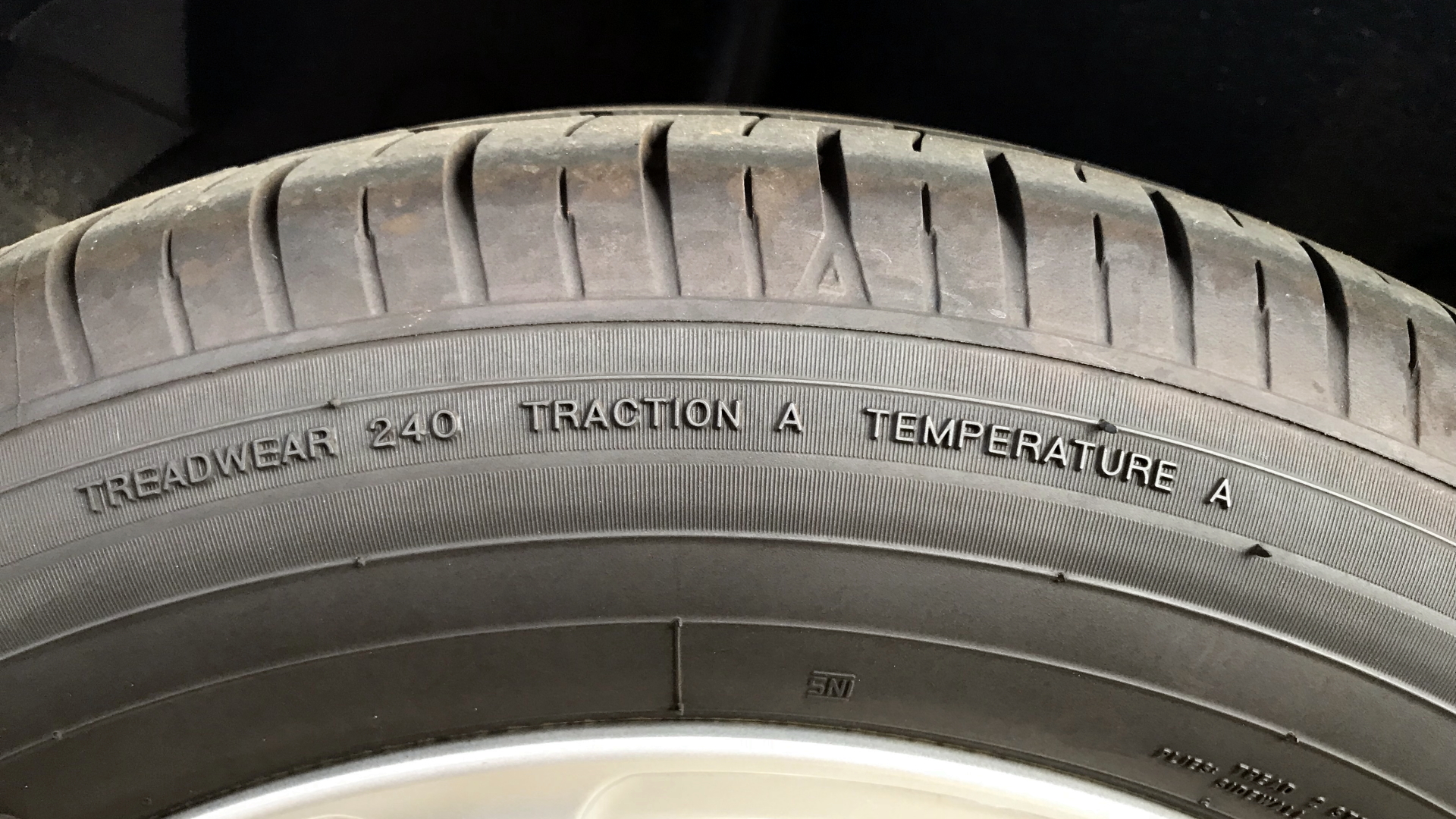What Causes Inside Tire Wear

Inside tire wear can be caused by a variety of factors, ranging from improper tire inflation to alignment issues. It is important to understand the causes of inside tire wear in order to ensure that your tires are properly maintained and that you get the most out of your tires. In this article, we will discuss what causes inside tire wear and the best ways to prevent it.Inside edge tire wear is caused by a few different factors. The most common cause is when the vehicle’s alignment is off, which can cause the tires to wear unevenly and more on the inside edges. This can be caused by hitting potholes or other obstacles that throw off the alignment, as well as from worn suspension components or a bent axle. Another potential cause of inside edge tire wear is when the vehicle’s camber angle is too negative, meaning that the top of the tire leans inwards towards the centerline of the vehicle. This can also cause uneven tire wear and will need to be adjusted by an experienced mechanic. Finally, overinflated tires can also lead to inside edge tire wear as they will not flex evenly across their surface when rolling down the road.
Signs of Inside Edge Tire Wear
Inside edge tire wear is a common problem that can cause a variety of issues with your vehicle. It is important to be aware of the signs of inside edge tire wear so that you can address the issue before it becomes more serious. The most common signs of inside edge tire wear include uneven tread wear, decreased traction, and excessive vibration while driving.
Uneven tread wear is one of the primary indicators of inside edge tire wear. This type of tire wear typically occurs on the inner edges of the tires and can be spotted by looking at the tread pattern. If you notice that the tread on your tires is wearing down more on one side than the other, it could be an indication that there is an issue with inside edge tire wear.
Decreased traction can also be a sign of inside edge tire wear. If your vehicle seems to lack grip or traction when accelerating or turning, it could be an indication that there is an issue with your tires due to uneven wear on the inner edges.
Excessive vibration while driving can also indicate an issue with inside edge tire wear. When your tires are wearing down unevenly on one side, it can cause vibrations in your vehicle as you drive. If you feel shaking in your steering wheel or seat when driving, it could be a sign that there is an issue with inside edge tire wear.
If you notice any of these signs of inside edge tire wear, it is important to have your vehicle checked out by a professional as soon as possible to ensure that any potential issues are addressed before they become more serious.
Inside Edge Tire Wear
Inside edge tire wear is a common issue for many drivers. This type of wear can be caused by a variety of factors, including improper alignment, incorrect tire pressure, and poor driving habits. Improper alignment of the tires can cause excessive weight to be placed on the inside edge of the tire, leading to premature wear. Incorrect tire pressure can also cause additional stress on the inside edge of the tire, resulting in uneven wear. Finally, poor driving habits such as hard cornering and aggressive braking can also contribute to premature wear on the inside edge of the tires.
To minimize inside edge tire wear, it is important to make sure that your tires are properly aligned and that the correct amount of air pressure is maintained in each tire. Additionally, it is important to use good driving habits and avoid aggressive cornering or braking which can lead to increased stress on the inside edge of your tires. Taking these steps will help ensure that your tires remain in optimum condition and last as long as possible.
Alignment Problems That Lead to Inside Edge Tire Wear
Tire wear on the inside edge of the tire is often caused by misalignment. This type of wear can be caused by a variety of issues, including incorrect toe-in or toe-out settings, camber misalignment, and improper suspension geometry. Toe-in and toe-out refer to the angle of the tires in relation to each other when viewed from above. Incorrect toe settings will cause the tires to push against each other as they roll down the road, leading to uneven tire wear. Camber misalignment is when one wheel is tilted outward more than the other. Improper camber settings can cause one side of the tire to rub against the road more than the other, leading to excessive inside edge wear. Lastly, improper suspension geometry can cause uneven tire wear as well. If one side of the car is lower than the other, it will cause one side of the tire to make contact with the road more than the other, leading to inside edge tire wear.
To fix these alignment issues and prevent inside edge tire wear, it’s important that you have your vehicle’s alignment checked regularly by a qualified technician. The technician will make sure that all angles are properly adjusted for your vehicle’s specific make and model, preventing you from experiencing any unnecessary tire wear due to misalignment problems.
Misaligned Wheels as a Cause of Inside Edge Tire Wear
When the wheels on your vehicle are misaligned, it can cause excessive wear on the inside edge of the tires. This can be caused by a variety of issues, such as hitting a pothole, running over an object in the road, or even just regular wear and tear on the vehicle. Misalignment can also occur if the suspension or steering components of your vehicle become worn or damaged.
When your wheels are not properly aligned, it will cause the tire to wear unevenly. The inside edge of the tire will wear down faster than other areas, which can lead to premature tire failure. It can also cause a rough and bumpy ride due to increased vibration from the tires. Additionally, misaligned wheels can lead to uneven braking and handling since they won’t be able to grip the road evenly.
If you notice that your tires are wearing out faster than normal on one side or that you have an uneven ride quality, it is important to have your wheels checked for misalignment right away. Most auto repair shops offer wheel alignment services which will ensure that your wheels are properly aligned and that you receive optimal performance from your vehicle. Having your wheels aligned regularly is important in order to ensure that you get maximum life out of your tires and that you have a safe and smooth ride every time you get behind the wheel.

Camber Problems as a Cause of Inside Edge Tire Wear
Camber problems can be a cause of excessive inside edge tire wear. Camber is the angle of the wheel relative to the vertical plane, and when it is out of alignment, it can cause tires to wear unevenly. When camber is not set correctly, the tire will lean inwards or outwards from the center, resulting in an increased pressure on one side of the tire. This causes the tire to wear down more quickly on that side and can lead to premature tire failure.
To correct camber problems, a mechanic must check all four wheels for proper alignment. They may need to adjust the suspension components or add shims to make sure that all four wheels are at their correct angles. This ensures that weight is evenly distributed across all four wheels, which reduces wear and tear on the tires and increases their life span. The mechanic may also need to replace worn ball joints and other suspension components if they are causing improper wheel alignment.
In addition, regular tire rotation can help minimize inside edge tire wear caused by camber problems. Tires should be rotated every 5-7 thousand miles or as recommended by your vehicle manufacturer. This allows all four tires to share the load evenly and helps them last longer before needing replacement. If you notice that your tires are wearing unevenly, it’s important to get them checked by a professional mechanic as soon as possible in order to avoid further damage or costly repairs down the road.
Toe Angle Issues as a Cause of Inside Edge Tire Wear
The toe angle of a vehicle is an important factor in the performance of its tires. When the toe angle is incorrect, it can cause excessive wear on the inside edge of the tire, reducing its life and performance. Toe angle is defined as the difference between the direction each wheel is pointing when viewed from above. A positive value indicates that the wheels are pointing outwards, while a negative value means that they are pointing inwards.
When the toe angle is set incorrectly, one or both of the wheels will be pointing inwards more than they should be. This causes the inside edge of the tire to rub against the ground more than it should, leading to increased wear on that side and decreased tire life overall.
It’s important to make sure that your vehicle’s toe angle is set correctly during regular maintenance. This can be done by measuring and adjusting it using specialized tools. If you don’t have access to these tools, you can take your car to a mechanic or auto shop and have them check and adjust it for you.
If your car’s toe angle is set too far outwards (positive), this can also lead to excessive inside edge tire wear due to scrubbing. In this case, you will need to reduce the positive toe angle by adjusting it inwards until it reaches its optimal setting.
Toe angle issues can cause a variety of problems with your vehicle’s tires, including uneven wear and decreased performance due to reduced grip on certain surfaces. It’s important to make sure that your vehicle’s toe angle is set correctly in order to maximize its tire life and performance, so make sure you check it regularly or have a professional do so for you if necessary.
Incorrect Tire Pressure as a Cause of Inside Edge Tire Wear
One of the most common causes of inside edge tire wear is incorrect tire pressure. When the pressure in your tires is too low, it can cause the inside edge of your tire to wear faster than the rest of the tire. This wear can be exacerbated by sudden turns or aggressive driving, as the increased force disproportionately affects the inside edge of the tire due to its lower pressure. The result is decreased tread depth at that part of your tire, making it more prone to slipping during turns and other high-stress maneuvers.
In order to prevent this type of inside edge tire wear, it is important to make sure that your tires are properly inflated. Doing so will help ensure that all parts of your tires are receiving an equal amount of pressure and will help keep them from wearing prematurely. You should also take care when driving aggressively or taking sharp turns, as these maneuvers can cause increased strain on an already weakened inside edge.
If you do find yourself with inside edge tire wear, there are a few options available for repairing it. You can either replace the tires entirely or have them patched, depending on the severity and location of the damage. In any case, it is important to address this issue quickly in order to avoid further damage and potential danger on the roads.

Conclusion
Inside tire wear is a common issue among vehicle owners, and it’s important to understand what causes it so that you can take steps to prevent it. The most common causes of inside tire wear are improper alignment, worn suspension components, unbalanced tires or wheels, and overloading.
In order to prevent inside tire wear, it’s important to have your vehicle regularly inspected by a certified technician. They will be able to spot any potential issues before they become more serious and costly problems. Additionally, having your alignment checked and tyres balanced regularly is a great way to ensure that your tires are wearing evenly.
Ultimately, taking the time to understand the causes of inside tire wear and taking steps to prevent it will save you time, money, and hassle in the long run.
